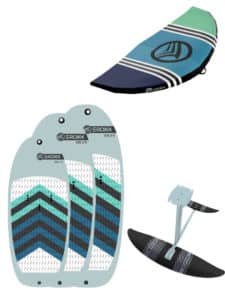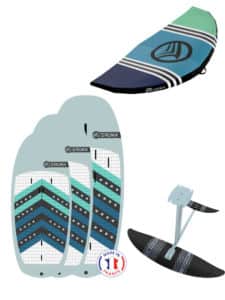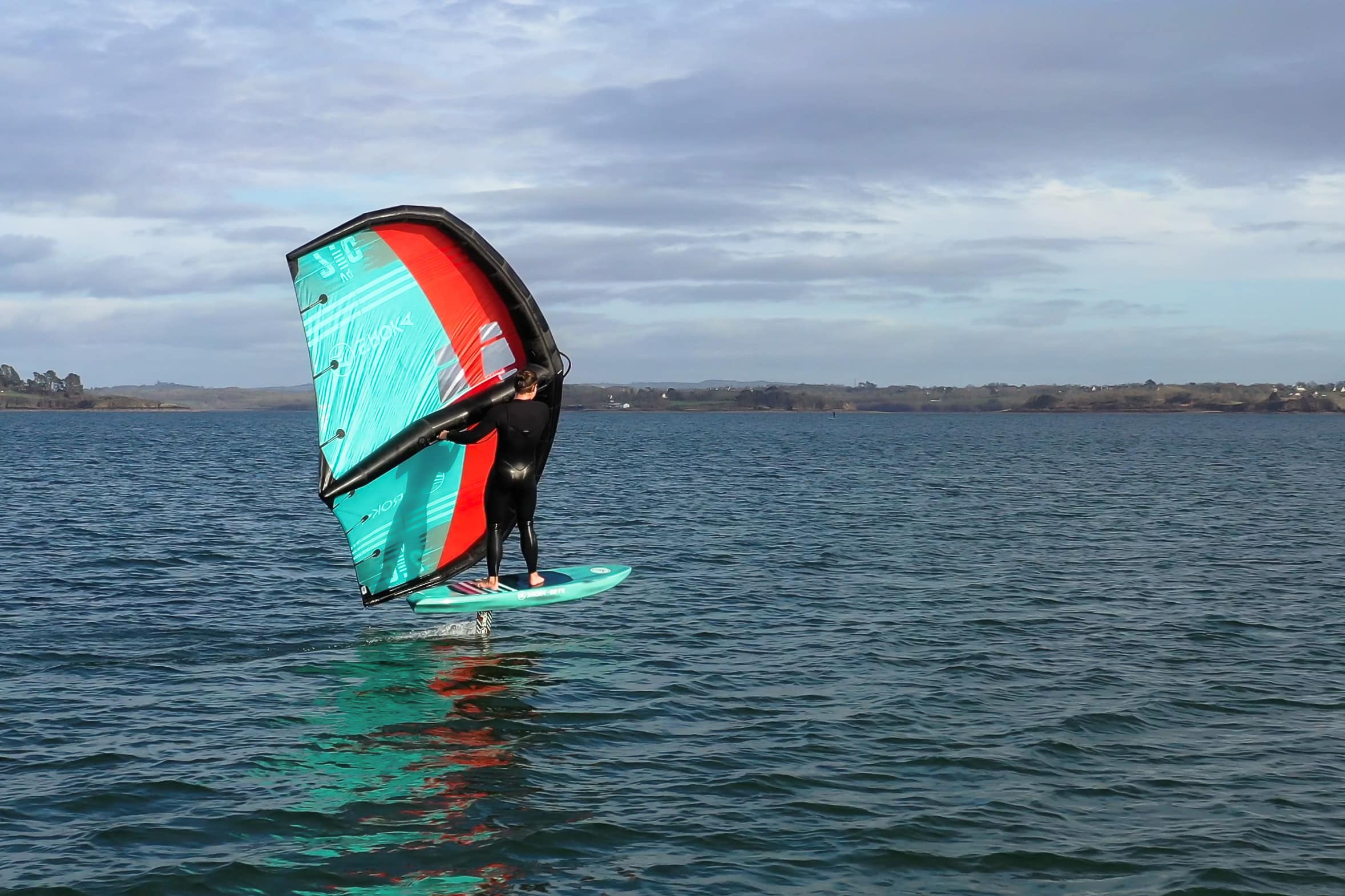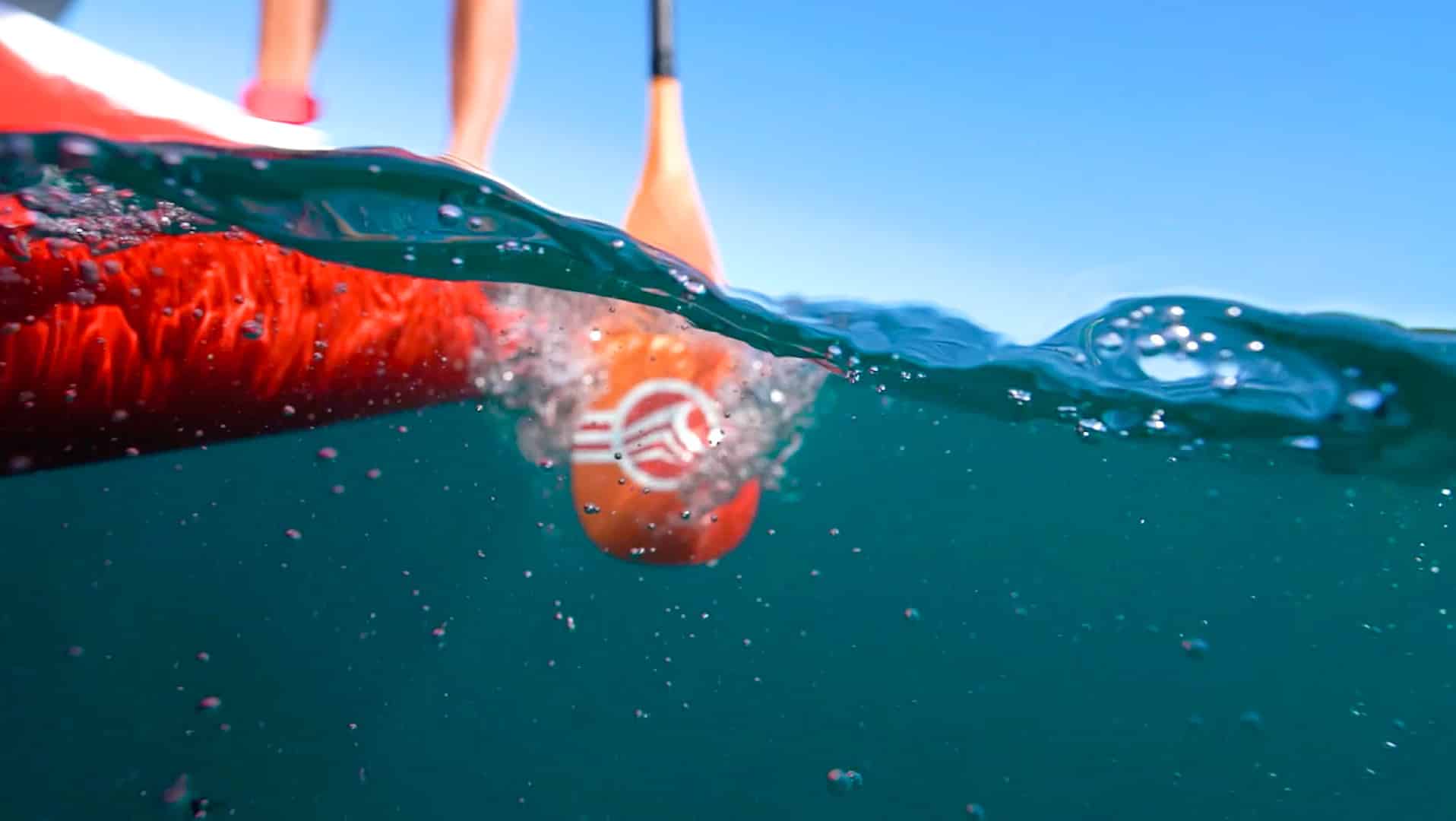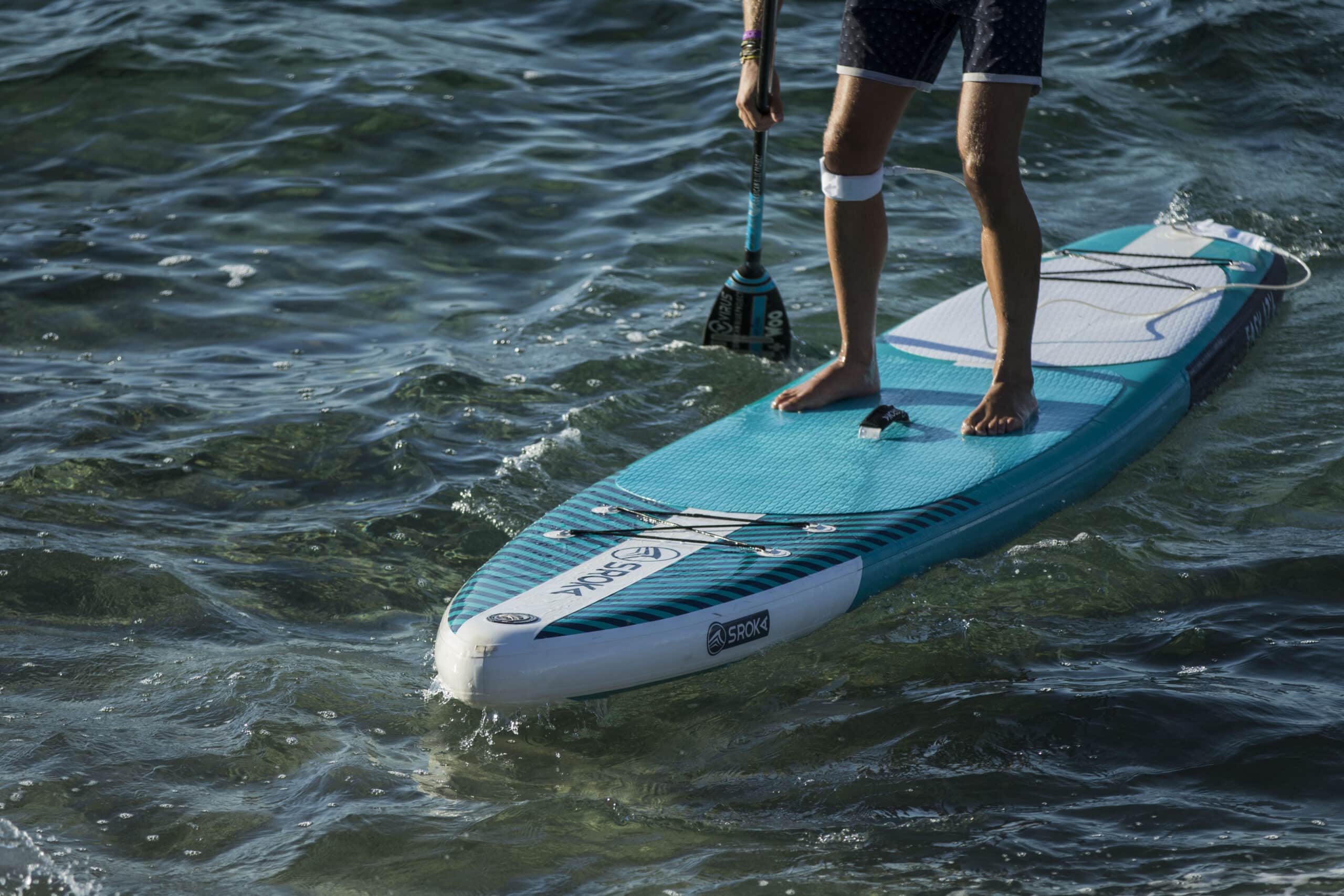New board from ultra Light Wind and the Down Wind, the DW by Sroka. Or the board that will make you forget the nickname of …
How to learn Wing Foil?
Wing foil is a great mix between surfing and sailing, which allows you to access unforgettable sensations whatever your level. However, some good basics are necessary to carry out great sessions and consider your first flights. Here are all the elements to learn wing foil in good conditions.
Can you learn wing foil on your own?
Wingfoil is a water sport accessible to all, whether you have already practiced a sliding sport or not. It consists of navigating on the water thanks to a board, a foil and a wing. Although this new board sport is easy to access, it is not advisable to start learning it alone. When we start a new sport, it’s quite normal that we don’t know much about it. That’s why it’s much better to be supervised by professionals during your first steps. Indeed, you need to understand several parameters to avoid any risk of injury or danger. It is essential to understand how your foil works in the water, as well as the rules of navigation. You must also be familiar with the characteristics of your body of water and the sailing conditions.
- What are the ideal weather conditions to start WingFoil?
- Which outfit is best for this sport?
- What equipment should I invest in for wing foil?
> To answer all these questions, there is nothing better than the opinion of experts in the sector.
The most suitable if you want to progress quickly and efficiently: sign up for wing foil lessons. WingFoiling is booming, and many clubs or schools are developing around this practice, within the French Sailing Federations or independently. You’ll have no trouble finding a club near you. During these sessions, you will be supervised by instructors who are perfectly familiar with the specificities of this sport.
The lessons are also an opportunity for you to discover the best wing foil spots to fly above the water and get valuable advice on the equipment to get.
What are the courses available to learn wing foiling?
To find a spot to take Wingsurfing lessons, you don’t have to live on the coast! Lakes and bodies of water are great spots to start and progress. Contrary to what one can imagine, Wingfoil courses are quite widespread in Ile de France. Go to one of the many water sports schools that offer courses to learn about this new practice. Everywhere in France, these schools also offer introductory courses during the summer and school holidays for children.
In these water sports centres, you will have the choice between private lessons and group lessons given by professionals in the sector. It’s up to you to choose what suits you best for a successful apprenticeship!
In addition to offering supervised and secure lessons, the schools lend you the adapted equipment you need for your wing foil sessions (board, wing, hydrofoil, helmet, etc.). This is an element that should not be neglected because equipping yourself in your entirety can have a certain cost.
How long does it take to learn wing foiling?
Learning to fly a foil can take more or less time depending on each profile. People who have already practiced board sports such as surfing, kitesurfing or windsurfing for example, will tend to progress faster. Rest assured, even if you have no history in water sports, WingFoil is still accessible. The first sessions allow you to familiarize yourself with the wing and the hydrofoil. In particular, you will be able to learn how to handle your kite and find the right positioning on the board.
To give you an idea, The first flights usually arrive after 6 to 8 sessions of 2 hours For a person with no previous experience but with a good physical condition. In wing foil, the learning time depends on the equipment used, the physical condition of each person, their size… And logically, the more time you spend in the water, the more progress you will be able to make.
What are the first steps to learning wing foiling?
Once you’ve got the right footing, it’s time to pick up speed and get to grips with the foil’s take-off. It is necessary to position the wing well above your head, while orienting it in an axis facing the wind. Like an airplane, the foil will take on a horizontal speed and glide. This will generate lift and lift your foil. Pump lightly on your board and sail to gain speed and activate the lift of the foil. The goal is to be able to fly over the water to get your fill of thrills. The duration of the flight will change over time and your ability to manage the weight distribution on the board, and the orientation of your glider.
Above all, keep in mind not to be too impatient, take your time otherwise you risk injuring yourself or damaging your equipment. Not getting to the level you want to get to as quickly as you thought? Persevere and don’t worry, you will inevitably manage to feel pleasant sensations, no matter your level.
What are the techniques to progress in wing foiling?
Once you are comfortable on your board, you are able to handle all the equipment simultaneously and you are able to fly away from the shore and then back to the edge, a multitude of techniques are available to you such as:
- THE JIBE. This movement consists of turning around in mid-flight and allows you to feel strong sensations of acceleration. To achieve this, lean on your feet by positioning your wing high enough, then once downwind let go of the kite to take it up on the other side. It’s a movement almost similar to windsurfing and quite technical. Once you’ve mastered it, you can start having fun on the swell and surf your first waves. To learn more about the jibe and its different techniques, we invite you to read our complete and illustrated tutorial.
- PUMPING. This technique consists of pumping using your legs on the foil to produce mechanical displacement energy and create speed. A good pumping combined with a good speed allows you to move while providing much less energy. Pumping with a foil requires technique, coordination and above all learning but remains accessible with practice. Find our detailed step-by-step tutorial for pumping in foil on this article.
- THE JUMP. On choppy water, get as fast as possible with your sail and foil. When you spot a section to perform your jump, bend your legs and then straighten them to generate a pulse, the wing well above the head. Our advice to learn how to do your first Wing Foil jumps.
- Knowing how to go upwind
- Sailing in a light wing
There are still many other techniques and tricks (backflip, 360, downwind…) to perform in Wingfoil that you can perform as you progress.
The advantage of this discipline is that you don’t need to be too windy to get pleasant sensations. Therefore, every windy day is an opportunity to get in the water and progress a little more. Wing foil requires a bit of stamina and willpower but the results are really fantastic. After a few hours of intensive lessons, get ready to literally fly over the water! Unforgettable.
Our SROKA packs to learn wing foil
If you still have questions about this, or for any other request, please do not hesitate to contact us !
Article you may be interested in
In general, we can draw a parallel between the paddle and the car in order to better understand the differences between materials and variations in …
For more than 10 years now, inflatable stand up paddle has continued to develop and spread on French beaches. Beyond the fun aspect of the …
Are you looking for an inflatable paddle board for the summer to sail at sea or in lakes? The inflatable paddle board really has a …

